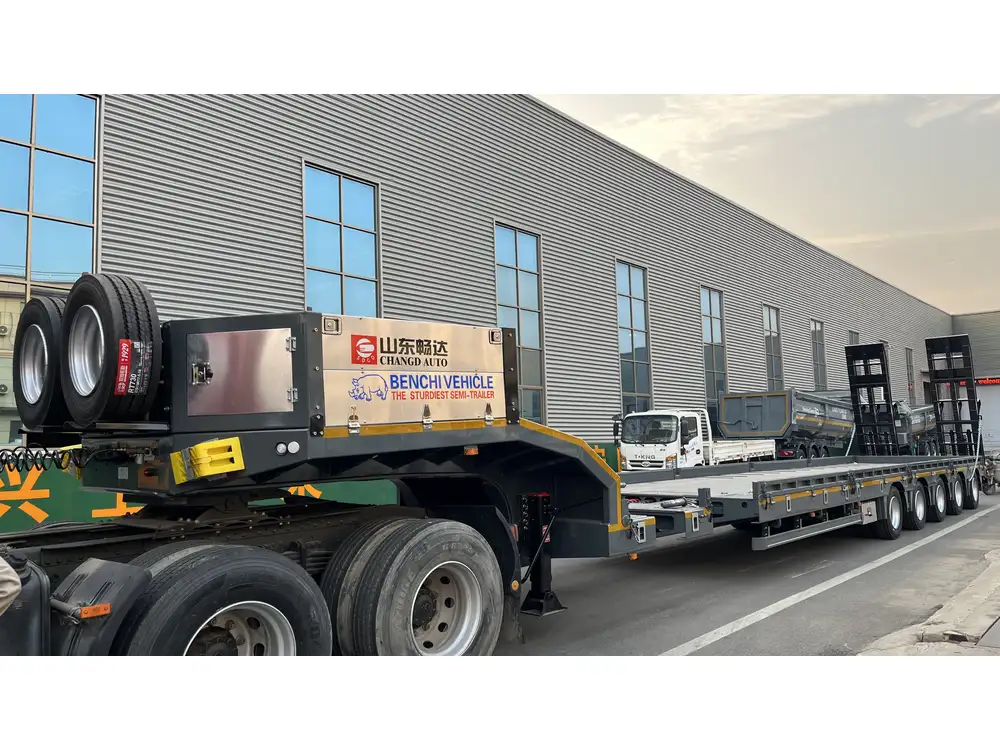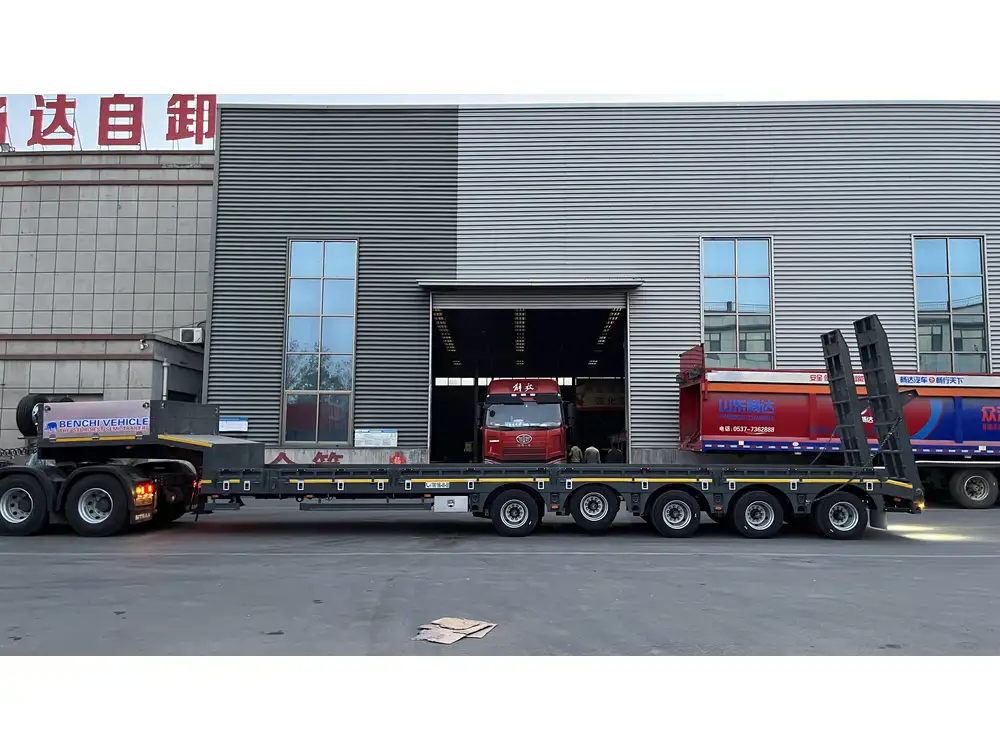Introduction
Understanding the mechanics of your semi-trailer is essential for ensuring optimal performance and safety on the road. One critical component that plays a significant role in maintaining proper ride height and handling is the leveling valve. This article serves as an exhaustive guide on how to adjust the leveling valve on a semi-trailer, delving into its mechanics, importance, and detailed step-by-step instructions with visuals.
What is a Leveling Valve?

Definition and Functionality
A leveling valve, often referred to as an air suspension control valve, is responsible for adjusting the suspension system of a semi-trailer. This component plays a crucial role in maintaining the desired height of the trailer and ensuring a smooth ride by controlling the airflow in the suspension system. Proper adjustment of the leveling valve can prevent issues such as uneven tire wear, compromised stability, and potential damage to the trailer components.
How Does It Work?
The leveling valve operates by sensing the height of the trailer’s suspension system. It utilizes a lever arm connected to the axle and a pneumatic system that maintains the suspension’s air pressure according to the load and height. When the trailer load changes, the leveling valve adjusts the air pressure in the suspension bags, keeping the trailer at the correct height.
Why is Proper Adjustment Important?
- Safety: A well-adjusted leveling valve enhances road safety by ensuring stable handling and braking.
- Performance: Correct adjustments optimize cargo loading and distribute weight evenly, impacting fuel efficiency.
- Tire Longevity: Proper leveling reduces uneven tire wear, extending tire life and improving traction.
- Comfort: An adequately adjusted suspension system allows for a smoother ride, reducing driver fatigue.

Symptoms of Misalignment
Recognizing the signs of a misaligned leveling valve can save time and prevent extensive repairs:
| Symptom | Description |
|---|---|
| Uneven Ride Height | One side of the trailer sits lower than the other. |
| Bumpy Ride | Excessive bouncing or swaying while in motion. |
| Increased Tire Wear | Uneven tread on tires, indicating load imbalance. |
| Frequent Air Leaks | Constant need to refill air pressure in the suspension. |
Tools You Will Need
Before adjusting the leveling valve, ensure you have the following tools on hand:
- Wrench Set: For loosening and tightening bolts.
- Ratchet and Socket Set: To access hard-to-reach areas.
- Air Pressure Gauge: For measuring air pressure in suspension bags.
- Grease Gun: To lubricate moving parts.
- Leveling Tool: To ensure accurate height measurements.
- Safety Gear: Gloves, goggles, and knee pads.
Step-by-Step Guide on How to Adjust the Leveling Valve

Step 1: Prepare the Semi-Trailer
- Safety First: Park the semi-trailer on a level surface and engage the parking brake.
- Chalk the Wheels: Prevent the trailer from rolling by placing wheel chocks on both the front and rear wheels.
Step 2: Inspect the Current Setup
- Identify the Leveling Valve Location: Typically located on the chassis frame near the rear axle, the leveling valve is connected to air suspension bags and control lines.
- Check for Visible Damage: Inspect the leveling valve and air lines for leaks, rust, or any physical damage.
Step 3: Measure the Ride Height
- Use a Leveling Tool: Determine the desired ride height based on the manufacturer’s specifications.
- Measure from a Fixed Point: Measure from the ground to the reference point on the trailer chassis to establish your baseline.

Step 4: Adjust the Leveling Valve
- Locate the Adjustment Arm: The adjustment arm is attached to the leveling valve.
- Loosen the Adjustment Bolt: Use the appropriate wrench to loosen the bolt securing the adjustment arm. Avoid complete removal; just loosen enough for adjustment.
- Adjust the Height:
- To Raise the Trailer: Extend the arm upward to create higher pressure in the air suspension bags.
- To Lower the Trailer: Shorten the arm by moving it downward which reduces air pressure.
- Re-tighten the Bolt: Once the desired height is achieved, re-tighten the adjustment bolt securely.
Step 5: Re-check the Ride Height
- Measure Again: Re-measure the height from the ground to the fixed point and ensure it aligns with the manufacturer’s specifications.
- Make Additional Adjustments: If necessary, repeat steps 4 and 5 until the proper height is achieved.
Step 6: Test Drive
- Conduct a Test Drive: Take the semi-trailer for a short drive to ensure the adjustments hold and the ride is stable.
- Check for Abnormal Noise or Behavior: Pay attention to any unusual sounds or performance issues that may arise during the test drive.

Maintenance Tips For Leveling Valves
Maintaining the leveling valve is essential for long-term performance:
- Regular Inspection: Inspect the leveling valve and air suspension system at regular intervals.
- Lubrication: Keep connecting joints and the adjustment arm lubricated to prevent rust and ensure smooth operation.
- Air Line Check: Regularly check the air lines for leaks or blockages to ensure air reaches the leveling valve effectively.
When to Seek Professional Help
While adjusting the leveling valve can be handled in a DIY manner, certain scenarios may necessitate professional assistance:
- Persistent Issues: If the trailer continues to display uneven ride height or swaying after adjustments.
- Complex Problems: Complications involving the air suspension system or pneumatic components.
- Safety Concerns: Any uncertainties regarding operation or potential safety hazards should lead you to consult a qualified technician.
Conclusion
Adjusting the leveling valve on your semi-trailer may appear daunting, but with the right tools and a systematic approach, you can ensure your trailer operates effectively and safely. Regular maintenance and awareness of the valve’s role in your trailer’s performance are crucial for longevity and reliability. By following this comprehensive guide, you will be equipped with the knowledge to manage the leveling valve confidently, thus optimizing your semi-trailer for any load and journey ahead.

Call to Action
If you found this guide helpful or have specific questions about your semi-trailer, feel free to reach out for tailored assistance. Ensure your trailer maintains optimal performance by regularly checking and adjusting components as needed. Safe travels!



